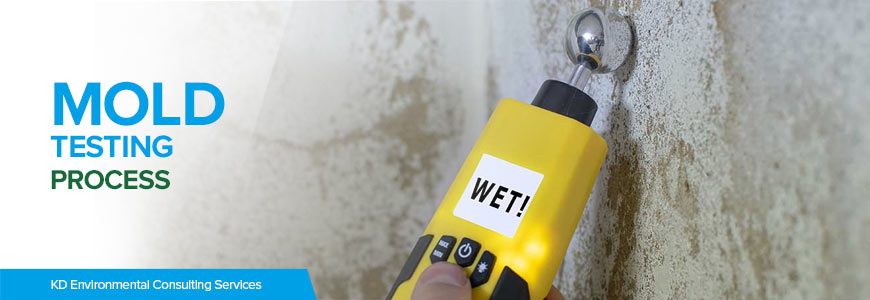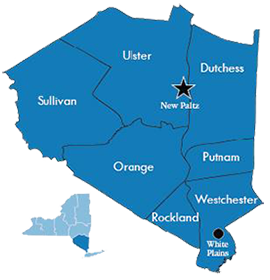- Questions? Call us now
- 845-203-3934
- Click here to contact us

Mold Testing Process in New York - Hudson Valley
Swab sampling is one of the single most accurate techniques since it involves direct contact with the suspect area.
Air sampling involves a vacuum pump drawing air into a canister and impacting onto a flat plate. The lab removes the plate to identify and perform a count of the present spores.
A List of Our Services
If the service has anything to do with mold, it is a service we perform at KD Environmental Consultation Services. Our comprehensive list of services includes:
- Air Tests
- Surface Swab Tests
- Tape Lifts
- Reports & Analysis
- Infrared (IR)
Moisture Control
There are various ways water can infiltrate your home. It may enter due to leaks or seep through basement floors. Even activities like showering or cooking can introduce moisture into your indoor environment. The capacity of indoor air to hold moisture is influenced by its temperature. When the temperature drops, the air's moisture-holding ability diminishes. Consequently, during colder weather, moisture tends to condense on chilly surfaces, such as the formation of water droplets on the inside of windows. This condensed moisture can create conditions conducive to the growth of biological pollutants.
Numerous methods exist to manage moisture levels within your residence:
- Act swiftly on water seepage or leakage. External water infiltration offers various solutions, from landscaping tweaks to comprehensive waterproofing (with correct grading away from the house). Basement dampness may result from missing gutters or inadequate water flow patterns. Likewise, water seepage around pipes and fixtures can foster biological pollutant growth.
Request Your On-Site Consultation!
We offer a Professional on-site inspection and consultation.
- Use a plastic barrier to cover dirt crawlspaces, preventing ground moisture intrusion. Seal all vents to minimize excessive humidity levels from rising.
- Install exhaust fans in moist place like bathrooms and kitchens to expel moisture outdoors, avoiding venting it into the attic. Ensure your clothes dryer is properly vented to the exterior.
- If you observe dampness on windows and any other surfaces, deactivate specific appliances like humidifiers or kerosene heaters.
- In warm, humid climates, employ dehumidifiers and AC to lower air moisture levels. However, ensure that these appliances do not become sources of biological pollutants themselves.
- Increase warmth on cold, moist surfaces with insulation or interior storm windows. Open doors between rooms, especially to colder closets, for better circulation. Use fans and rearrange furniture away from corners to enhance air and heat flow. Ensure your home has proper ventilation for fresh air and moisture control.
- Give particular consideration to carpets on concrete floors, as they can trap moisture and become a breeding ground for biological contaminants. Instead, opt for washable area rugs. In specific climates, when installing carpet on concrete, it may be essential to employ a vapor barrier (such as plastic sheeting) on the concrete surface, followed by sub-flooring (insulation beneath plywood) to ward off potential moisture issues.
- Moisture problems and solutions vary due to climate. he Northeast experiences cold and wet conditions, the Southwest is characterized by hot and arid weather, the South has hot and humid climate, and the Western Mountain states typically have cold and dry weather. Each region can face moisture issues. For example, in the Southwest, evaporative coolers can encourage biological pollutant growth, while in other warm areas, quick air conditioning cooling may hinder moisture removal. Diverse construction methods and weatherization in these climates create distinct challenges and solutions.
Locations In The Home Where Biological Contaminants Might Exist
|
1. Dirty AC |
8. Bedding |
Regularly Uphold And Sanitize All Water-Contacting Appliances
-
Arrange for professional inspections and maintenance of significant appliances like heat pumps, furnaces, and central air conditioners, particularly before each new season. Adhere to the manufacturer's guidelines for replacing filters in heating and cooling systems, typically on a monthly basis while in operation. When initiating heating or air conditioning at the beginning of a season, contemplate vacating your home temporarily to allow it to ventilate.
-
Regularly service window or wall air-conditioning units, especially before the cooling season, to minimize allergy-triggering pollen infiltration and prevent biological contaminants. Adhere to manufacturer instructions for coil cleaning and drain pan maintenance to avoid water buildup.
- Ensure that humidifiers attached to furnaces are regularly cleaned and maintained by a professional, especially before the start of the heating season.
- Follow the manufacturer's humidifier instructions. Use portable humidifiers (1- to 2-gallon tanks): daily empty and refill with suitable water. For larger ones, follow the manufacturer's water change guidance. Unplug before cleaning. Every third day, clean water-contact surfaces with 3% hydrogen peroxide solution and rinse thoroughly. Some suggest diluted bleach (1/2 cup per gallon) for cleaning; rinse well before refilling.
- Empty dehumidifiers daily, clean regularly, consider draining directly, follow the manufacturer's guidelines, and disconnect before cleaning.
- Follow the instructions of the manufacturer for cleaning fridge drip pans. Ensure proper seals on fridge and freezer doors to prevent excess moisture and mold. Clean or replace moldy door gaskets.
Clean Surfaces
-
Maintain cleanliness on moist or damp surfaces, such as in showers and on kitchen counters.
-
Remove mold from ceilings, floors, walls, and paneling. Avoid the temptation to simply cover it up with stain, varnish, paint, or a moisture-resistant sealant, as it could resurface.
-
Replace shower curtains that have mold effects, or take them down and give them a thorough scrub with a cleaner before rehanging.
Dust Control
Controlling dust is vital for those allergic to animal dander and mites. These invisible mites thrive in various places, including sofas, carpets, bedding, and on open shelves and blinds. Vacuuming alone won't remove them, as they reside deep within carpets. To manage mite allergies, many doctors advise using washable area rugs instead of wall-to-wall carpeting, along with maintaining clean and dry conditions in their habitats.
- Ensure that bedding is washed in hot water, with a minimum temperature of 130°F, to effectively eliminate dust mites. Cold water washing is insufficient. It's recommended to launder bedding at least every 7 to 10 days.
- Opt for synthetic or foam mattress toppers and pillows, and consider plastic covers for allergies. Avoid wool blankets, feather-filled comforters, and pillows.
- Dust and vacuum closets and rooms regularly, but keep in mind that this might not fully remove small particles like animal dander and dust mites. For dust allergies, wear a mask while cleaning. If allergies are severe, consider avoiding these chores or leaving the house when someone else cleans.
Before You Move
Safeguard yourself by thoroughly inspecting your prospective new residence. If you discover any issues, request the landlord or seller to address them before your move-in date, or contemplate searching for an alternative property.
- Engage professionals to inspect the heating and cooling system, which includes humidifiers and vents. Also, have them examine the duct lining and insulation for any signs of growth or issues.
- Check for exhaust fans in the kitchen and bathrooms. If none, ensure each has a window. Confirm the cooktop has a vented hood, and check dryer vent outside. Ensure vents go outdoors, not in attics or crawlspaces.
- Check for mold in attics, basements, crawlspaces, and around the foundation. Watch for damp, decaying plants near the house as potential sources of pollutants. Divert water away from the building with proper downspouts.
- Inspect for wall, floor, or carpet stains that hint at prior moisture problems. Look for window and surface condensation and signs of basement leaks or seepage.
- Examine for deteriorated building materials that could indicate moisture or water-related damage.
- Inquire about the presence of pets in the home if you or any family member has a pet allergy.
- Evaluate the architectural layout of the structure, bearing in mind that in colder regions, overhanging sections, rooms situated above unheated garages, and closets positioned along exterior walls could be susceptible to issues related to biological pollutants.
- Look for signs of cockroaches.
Warning!
Before starting the cleaning process, thoroughly review the usage instructions and any precautionary labels on cleaning products.
- Avoid blending any chemical substances, and in particular, never combine bleach-based cleaners with products like ammonia that lack explicit instructions for such mixing. Mixing chemicals can occasionally result in the creation of hazardous gases.
- Household chemicals can lead to skin and eye discomfort, including burning and irritation.
- Household chemicals can pose risks if ingested or breathed in.
- Prevent skin, eye, mucous membrane, and clothing contact.
- Prevent inhalation of vapors. Ensure proper ventilation by opening windows and doors, and employ an exhaust fan that expels air outdoors.
- Store household chemicals beyond the access of children.
- Thoroughly wash treated surfaces to eliminate any remaining chemical residues.
Correcting Water Damage
What if the damage has already occurred? Adhere to these instructions for rectifying water damage:
- Discard wicker furniture, straw baskets, mattresses, and similar items that have suffered water damage or contain mold. They are beyond salvage.
- Discard any furnishings that have been damaged by water, including items like curtains, carpets, upholstered furniture, stuffed animals, and ceiling tiles, unless they can be salvaged through processes like steam cleaning, hot water washing, and complete drying.
- Replace damp insulation to prevent the development of conditions conducive to the growth of biological contaminants.


